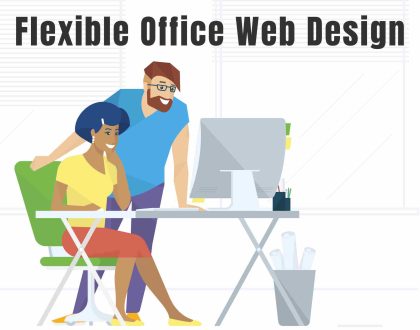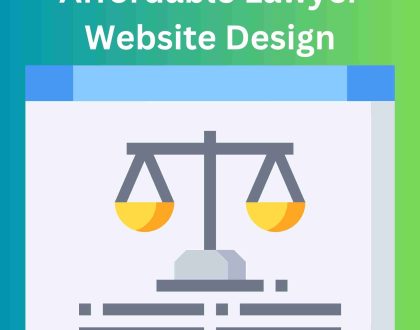Flexible Office Web Design – In the digital age, where the boundaries between work and life blur more than ever, the design of office spaces has evolved significantly. No longer confined to traditional brick-and-mortar establishments, the concept of the office has expanded into the virtual realm, thanks to the advent of flexible office web design. This transformative approach to workspace creation is revolutionizing how businesses operate, fostering collaboration, productivity, and innovation in ways previously unimaginable. In this comprehensive guide, we’ll delve into the intricacies of flexible office web design, exploring its benefits, best practices, and how businesses can leverage this dynamic approach to unlock their full potential.
Unlocking Creativity and Efficiency: The Power of Flexible Office Web Design
A. Understanding Flexible Office Web Design
Flexible office web design encompasses the strategic planning, layout, and optimization of digital workspaces to accommodate the diverse needs of modern businesses. Unlike static, one-size-fits-all office setups, flexible design allows for dynamic adaptation to changing requirements, workflows, and technologies. It embraces versatility, scalability, and user-centricity, empowering employees to work seamlessly across different devices, locations, and time zones.
At its core, flexible office web design prioritizes agility and responsiveness. It leverages modular elements, intuitive navigation, and adaptive interfaces to create fluid digital environments that foster collaboration, communication, and creativity. Whether it’s a multinational corporation, a startup, or a remote team, businesses of all sizes and structures can benefit from the flexibility and efficiency offered by this innovative design approach.
B. The Benefits of Flexible Office Web Design
Enhanced Collaboration:
- By breaking down physical barriers and facilitating virtual interaction, flexible office web design promotes collaboration among team members regardless of their geographical locations. Through integrated communication tools, shared workspaces, and real-time collaboration features, employees can collaborate on projects seamlessly, fostering creativity and synergy.
Improved Productivity:
- Flexibility breeds productivity. With personalized dashboards, customizable workflows, and tailored interfaces, employees can optimize their digital workspaces to suit their preferences and workflows. This not only streamlines tasks but also minimizes distractions, allowing individuals to focus on their priorities and deliver results more efficiently.
Scalability and Adaptability:
- In today’s dynamic business landscape, scalability is essential. Flexible office web design allows businesses to scale their digital infrastructure effortlessly, accommodating growth, fluctuations in demand, and evolving business requirements. Whether it’s adding new features, integrating third-party tools, or expanding user access, the design can adapt to changing needs without disrupting operations.
Cost-Efficiency:
…
Read the rest Affordable Lawyer Website Design – In today’s digital age, having a strong online presence is essential for any business or professional, including lawyers. Your website serves as the first point of contact for potential clients, making it crucial to have a well-designed and informative site that reflects your expertise and professionalism. However, many lawyers may be hesitant to invest in a website due to concerns about cost. Fortunately, affordable options are available, allowing even solo practitioners and small law firms to establish a compelling online presence without breaking the bank.
Affordable Lawyer Website Design: A Comprehensive Guide to Building Your Online Presence
In this comprehensive guide, we’ll explore the importance of a lawyer’s website, the key elements of effective design, and strategies for creating an affordable yet impactful site that attracts clients and enhances your professional reputation.
A. Why Do Lawyers Need a Website?
In today’s digital-centric world, consumers rely heavily on the internet to find information and services, including legal representation. A well-designed website not only provides potential clients with essential information about your practice areas, experience, and contact details but also serves as a powerful marketing tool. Here are some reasons why every lawyer should have a website:
Credibility and Professionalism:
- A professionally designed website enhances your credibility and professionalism in the eyes of potential clients. It demonstrates that you are technologically savvy and committed to providing a positive user experience.
Accessibility:
- Your website allows potential clients to learn about your services and expertise at any time, day or night, without the need for a phone call or office visit. This accessibility can be particularly beneficial for individuals with busy schedules or those seeking legal assistance outside of regular business hours.
Marketing and Branding:
- A website is an essential component of your overall marketing strategy. It serves as a platform to showcase your unique value proposition, differentiate yourself from competitors, and establish your brand identity in the legal marketplace.
Client Acquisition:
- An optimized website can attract new clients by ranking high in search engine results for relevant keywords. By leveraging search engine optimization (SEO) techniques, you can increase your visibility online and capture the attention of individuals seeking legal services in your practice areas.
Communication and Engagement:
- Your website provides a platform for communicating with potential and existing clients. You can share informative content, answer frequently asked questions, and encourage visitor engagement through contact forms, live
…
Read the rest Website Design Review Checklist – In the bustling realm of the internet, where every click leads to a new journey, the design of a website serves as its digital storefront. It’s the first impression, the welcoming embrace, and the guiding hand that navigates users through a virtual landscape. Crafting a website that captivates, engages, and converts requires meticulous attention to detail. This comprehensive website design review checklist serves as your compass, guiding you through the intricacies of creating digital masterpieces that leave a lasting impact.
The Ultimate Website Design Review Checklist: Crafting Digital Masterpieces
1. Purpose and Goals:
Before delving into the intricacies of design, it’s imperative to define the purpose and goals of your website. Understanding the core objectives will shape every aspect of its design and functionality. Ask yourself:
- What is the primary purpose of the website?
- What specific goals do you aim to achieve?
- Who is the target audience, and what are their expectations?
2. User Experience (UX):
User experience is the cornerstone of effective website design. A seamless, intuitive UX ensures that visitors can navigate your site effortlessly. Review the following elements:
- Navigation: Is the navigation menu clear and accessible? Does it guide users to key sections of the website?
- Responsiveness: Test the website across various devices and screen sizes to ensure responsiveness.
- Page Speed: Analyze loading times and optimize elements to improve page speed.
- Accessibility: Ensure that the website complies with accessibility standards, including alt text for images and keyboard navigation.
3. Visual Design:
Visual appeal plays a crucial role in capturing and retaining user attention. Evaluate the visual design elements meticulously:
- Color Scheme: Does the color scheme align with the brand identity? Is it visually appealing and conducive to readability?
- Typography: Assess the readability of fonts and consistency across different sections of the website.
- Imagery: Review the quality and relevance of images, ensuring they complement the content.
- Consistency: Maintain consistency in design elements such as buttons, icons, and spacing throughout the website.
4. Content Quality:
Compelling content is the backbone of any successful website. Review the quality, relevance, and presentation of content:
- Clarity: Ensure that content is concise, easy to understand, and free of grammatical errors.
- Relevance: Is the content relevant to the target audience and aligned with the website’s objectives?
- Readability: Use formatting techniques such as headings, bullet points, and white space to enhance readability.
- Multimedia: Evaluate the use of multimedia elements
…
Read the rest Reviews Website Design – In today’s digital age, online reviews wield immense power. From choosing the perfect restaurant for a special occasion to selecting the best smartphone on the market, consumers rely heavily on reviews to make informed decisions. As a result, reviews websites have become pivotal platforms for users seeking authentic insights into products, services, and experiences.
The Ultimate Guide to Reviews Website Design: Crafting an Engaging and User-Friendly Platform
However, in the vast landscape of the internet, not all reviews websites are created equal. The success of such platforms hinges not only on the quality of the reviews themselves but also on the design and functionality of the website hosting them. In this comprehensive guide, we delve deep into the intricacies of reviews website design, exploring the key elements that contribute to a user-friendly and engaging platform.
Chapter 1: Understanding the Importance of Reviews
Before diving into the specifics of reviews website design, it’s essential to grasp why reviews hold such significance in the digital era. In this chapter, we explore the psychology behind consumer reviews, the impact they have on purchasing decisions, and the role they play in shaping brand perception.
- The Psychology of Reviews: Delving into the reasons why consumers trust reviews and how they influence behavior.
- The Power of Social Proof: Examining how social proof, as demonstrated through reviews, can sway opinion and drive conversions.
- Building Trust and Credibility: Exploring how a robust reviews section can enhance a website’s credibility and foster trust among users.
Chapter 2: Key Elements of Reviews Website Design
Now that we understand the importance of reviews, let’s shift our focus to the design elements that contribute to an effective reviews website. In this chapter, we dissect the essential components of reviews website design and offer actionable insights for creating a visually appealing and user-friendly platform.
- Intuitive Navigation: Discussing the importance of intuitive navigation and how it impacts user experience when browsing reviews.
- Responsive Design: Exploring the significance of responsive design in ensuring a seamless experience across various devices and screen sizes.
- Visual Hierarchy: Delving into the principles of visual hierarchy and how they can be applied to highlight important reviews and key information.
- Clear Call-to-Action (CTA): Examining the role of clear and compelling CTAs in encouraging user engagement, such as leaving reviews or exploring related content.
Chapter 3: Designing for Accessibility and Inclusivity
Inclusivity and accessibility are paramount … Read the rest





